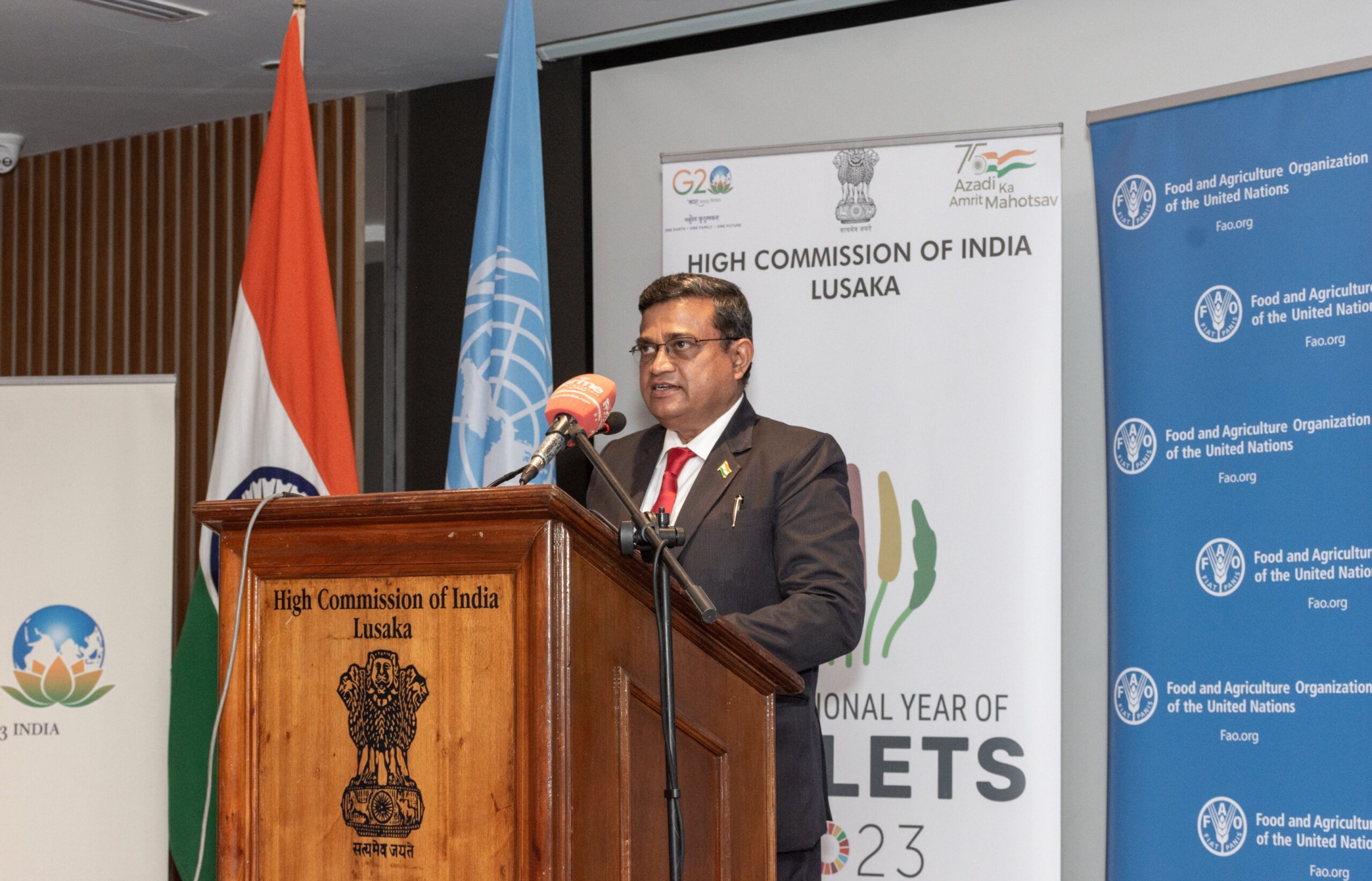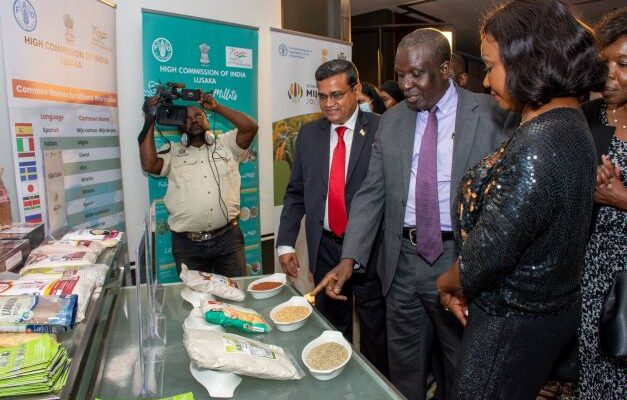Zambia’s millet production has declined to 39,095 tonnes in the 2021/22 farming season from 58,859 tonnes the previous season.
According to the crop forecast survey, millet production in Zambia declined by 33 percent to 39,095 tonnes.
The Indian government has therefore committed to extend its expertise in the sector aimed at ensuring that the country’s millet production was increased.
Agriculture Minister Reuben Mtolo Phiri said millets had been widely cultivated as a traditional crop in Zambia and that 39,095 tonnes of millets were produced in 2021-22 farming season.
Phiri said on Thursday at Millet Food Festival in Lusaka that millets ranked as the second most important staple diet crop in Zambia, after maize.
He however expressed concern that the production levels of millets were declining in many countries including Zambia despite their potential to address food and nutritional security.
Read more: 17 millers receive cheap maize, as govt battles to force down prices
Mtolo said the millet production in Zambia declined by 33 percent from 58,859 tonnes in 2020-21 to 39,095 tonnes produced in the 2021-22 farming season.
“The decline in millets production calls for an urgent need to promote the importance of the crop.
Particularly the nutritional and ecological benefit of millets to consumers, producers, and decision-makers in order to improve production efficiencies, research and development investments and food sector linkages,” Phiri said.
Speaking at the same function, Shri Ashok Kumar, the India High Commissioner to Zambia however believed that there was massive potential for the country to produce more millets and its related products.

India High Commissioner to Zambia Shri Ashok Kumar speaking at the Millet Food Festival in Lusaka on Thursday.
Kumar said India would therefore extend its expertise to Zambian industries in millet and millet products sector as India developed good quality value added products of sorghum such as multi grain flour, semolina and flakes, among others.
These products, he said, were now promoted and had aided in spreading of nutritional awareness of millets among the consumers.
“We would be very happy to support Zambia not only in agriculture sector but also on its allied industries such as Horticulture, Soil and water conservation, Agriculture Marketing, and Social forestry,” he said.
Kumar stated that millets were also good for farmers as they assisted small farmers with efficient crop rotation.
He explained that many millets needed only 60-90 days to mature while some cereal crops like wheat, rice and maize, which took 100-140 days to mature.
Millets, he said, were efficient in utilising the available nutrients and also responded well for improved farm conditions and additional application of inputs, and results in increased yield.
“Millets are climate resilient crops and are the most secure crops to small farmers as they are the hardiest, resilient and climate adaptable crops in harsh, hot and drought environments.
“They are often the last standing crops in drought season and will be the sustainable future food source amidst worsening climatic conditions,” Kumar said.












Comments